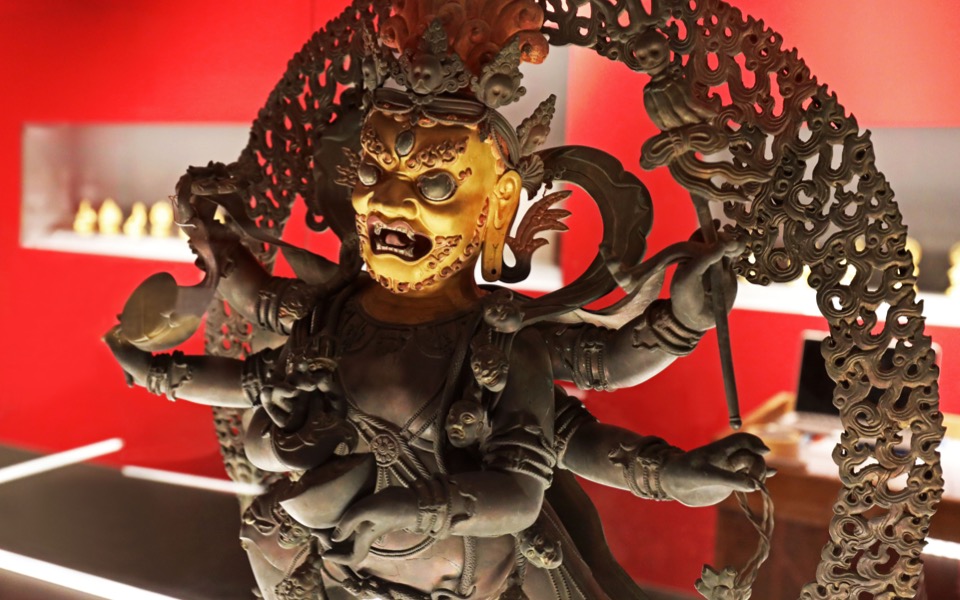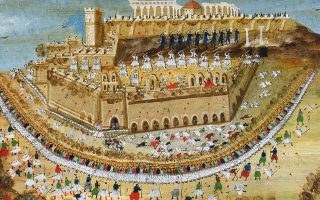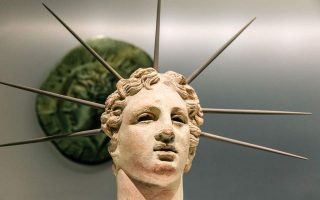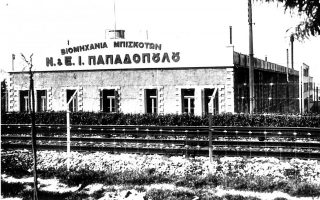Treasures from the Forbidden City in Athens

A huge portrait of Emperor Qianlong as a young man greets visitors at the entrance to the exhibition “From the Forbidden City: Imperial Apartments of Qianlong” at the Acropolis Museum. A little further on is a display case containing the gold-embroidered ceremonial attire that he once wore.
Before encountering this depiction of the great 18th century emperor of China – whose name means “Lasting Eminence” and who ruled the country with prudence and wisdom for 60 years – visitors are first treated to scenes from the Forbidden City: Projected onto a giant screen in the museum’s foyer, these create the sense of being transported to one of the most breathtaking cultural sites in the world.
The exhibition, which was inaugurated earlier this month, forms part of the Culture Ministry’s program for the Year of Cultural Exchanges between Greece and China.
As part of the effort to deepen cooperation and understanding between the two countries, the Greek museum accepted a proposal by the Palace Museum in Beijing for 154 rare exhibits that have never before been taken out of the private imperial apartments to be presented in Athens.
These include works of art, ceremonial dress, furniture, household items, and texts from the rooms of the Palace of Many Splendors in the Forbidden City that were used by Qianlong as a young man as he prepared to ascend to the throne. These exquisite items, representative of a century of Chinese culture, were stored for many years in the apartments that were not open to the public. Acropolis Museum representatives traveled to Beijing last winter in order to see them for the first time.
The president of the Acropolis Museum, Dimitrios Pandermalis, and the architect Eleni Spartsi, who oversees the design of the museum’s temporary exhibitions, then began creating the “scenography” of the exhibition, drawing inspiration directly from the buildings, colors and forms of the palaces of the Forbidden City. Their goal was to transport visitors through time and space and help them gain an understanding of the principles and values of Chinese culture through the personality of one of the Qing Empire’s most gifted rulers. Approximately three months of work were required for technicians and museum staff to create new spaces in the temporary exhibition halls, which now boast walls painted in the bright red of the palaces of the Forbidden City, a color which signifies happiness.
From the foyer, the visitor is guided through a labyrinth of rooms separated by Oriental room dividers. The next thematic section exhibits the tea sets used by the emperor and his guests, poetic texts written by Qianlong himself, and costumes used by actors in private theatrical performances held at the palace.
These are followed by the Room of Fragrant Orchids, which displays the heated bed of the imperial couple. Visitors then see a brocaded throne, and the emperor’s study, where he would spend many hours each day writing about the beauty of his country, human relationships as well as the proper exercise of royal powers.
The exhibition ends with exceptional Buddhist artworks made using precious materials.
“From the Forbidden City: Imperial Apartments of Qianlong” will remain on display at the Acropolis Museum (15 Dionysiou Areopagitou, tel 210.900.0900, www.theacropolismuseum.gr) until February 14, 2019. The museum is open Mondays from 8 a.m. to 3.30 p.m., Tuesdays to Thursdays and Saturdays and Sundays from 8 a.m. to 7.30 p.m. and Fridays from 8 a.m. to 9.30 p.m.





